In the digital landscape, the success of your online presence hinges on two crucial elements: Search Engine Optimization (SEO) and web design. These two aspects of your website are far from mutually exclusive; in fact, they intertwine and overlap in several significant ways. In this comprehensive guide, we’ll explore how SEO and web design work together to create a seamless user experience, drive traffic, and ultimately boost your online success.
Being innovative is crucial for staying ahead in the ever-changing world of digital marketing. Being at the top of Google’s front page, SocialSiren is the best digital marketing company that employs creative techniques and technology to keep your brand ahead of the competition.
The Interplay Between SEO and Web Design
1. How SEO and Web Design Work Together:
SEO and web design are like two sides of the same coin. SEO makes your website discoverable to search engines, while web design determines how your site looks and functions. When these two elements work in harmony, they create a website that is not only attractive and user-friendly but also ranks highly in search engine results pages (SERPs).
2. Importance of Considering SEO During the Web Design Process:
Incorporating SEO strategies during the web design process is crucial for creating a website that is both user-friendly and search-engine-friendly. All too often, businesses focus on creating a visually appealing site, neglecting SEO until after the site has been launched. This approach can lead to a website that looks great but fails to rank well in search engines.
Key Elements of SEO-Friendly Web Design
1. Site Structure and Information Architecture:
The structure of your website plays a significant role in both SEO and user experience. A well-defined site architecture makes it easier for search engine bots to crawl your site and understand its content. It also improves user experience by making it easy for visitors to navigate your site and find the information they’re looking for.
2. Mobile-Friendly and Responsive Design:
With the rise of mobile internet usage, having a mobile-friendly and responsive website is no longer optional—it’s a necessity. Google has made mobile-friendliness a key ranking factor, and with the introduction of mobile-first indexing, the mobile version of your website is now considered the primary version by Google.
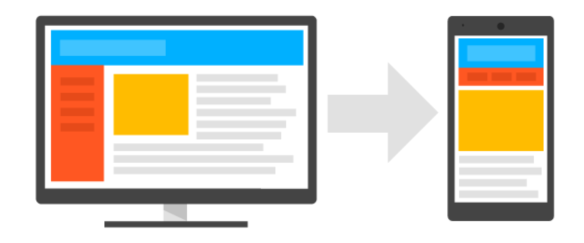

3. Usability and User Experience (UX):
Usability and user experience are key factors in both web design and SEO. A site that is easy to use and provides a positive user experience can lead to longer visit durations, lower bounce rates, and higher conversion rates—all of which can improve your site’s SEO performance.
4. Easy-to-Read Site Design:
The way your website presents material has a big impact on both the user experience and SEO. A well-designed website should make it easy for visitors to read and understand what you have to say. This involves utilizing clear, readable typefaces, vibrant colors for text and backdrop, and breaking text into small sections with headings, subheadings, and highlights.
5. Web Design Optimized for Conversions:
A key goal of any website is to convert visitors into customers. To achieve this, your website needs to be designed with conversion rate optimization in mind. This involves guiding users toward the desired action, whether it’s making a purchase, filling out a contact form, or signing up for a newsletter.
6. Site Speed Design:
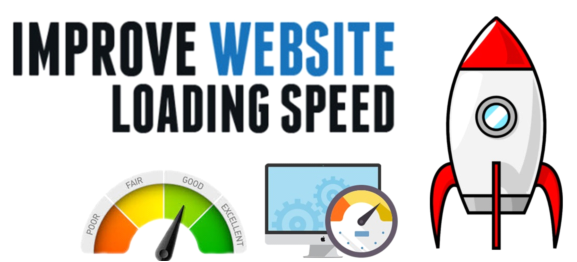

Your website’s load time can have a significant impact on both the user experience and SEO. Slow-loading websites can lead to high bounce rates, as users are likely to leave if they have to wait too long for your site to load. On the other hand, a fast-loading website can improve user experience, leading to longer visit durations and higher conversion rates.
7. Optimized Images:
Images play a crucial role in web design, adding visual interest and helping to convey your message. However, it’s important to ensure that your images are optimized for SEO. This includes using descriptive file names and alt text and ensuring that your images are the right size for fast loading.
Detailed Look at SEO Principles in Web Design
1. Importance of Keywords in Web Design:
Keywords are a fundamental aspect of SEO, and they should be a key consideration in your web design process. By incorporating relevant keywords into your website’s content, meta tags, and URLs, you can improve your site’s visibility in search engine results for those keywords.
2. Role of Meta Tags in SEO and Web Design:
Meta tags are snippets of text that describe a page’s content. They don’t appear on the page itself but in the page’s code. Meta tags can have a significant impact on your site’s SEO performance, as they help search engines understand what your page is about.
3. Importance of URL Structure in SEO:
The structure of your URLs can also impact your SEO performance. A well-structured URL is easy for both users and search engines to understand, indicating what the page is about. It’s best to use short, descriptive URLs that include relevant keywords.
4. The Role of Content in SEO and Web Design:

Content is king when it comes to SEO. High-quality, relevant content can improve your site’s SEO performance by engaging users and helping search engines understand what your site is about. In terms of web design, your content should be presented in a clear, easy-to-read format that enhances user experience.
How Web Design Impacts SEO
1. Impact on Crawling and Indexing:
Your website’s design can impact how easily search engine bots can crawl and index your site. A well-designed site will be easy for bots to navigate, improving your site’s visibility in search engine result pages.
2. Impact on Bounce Rate:
The design of your website can significantly influence your bounce rate, which is the percentage of visitors who leave your site after viewing only one page. A high bounce rate can negatively impact your SEO, as it suggests to search engines that users aren’t finding what they’re looking for on your site. By creating an attractive, user-friendly design, you can engage visitors, encourage them to explore more of your site, and ultimately reduce your bounce rate.
3. Impact on User Engagement:
Web design plays a crucial role in user engagement. Elements such as layout, color scheme, font choice, and image use can all influence how users interact with your site. A well-designed site can capture users’ attention, encourage them to spend more time on your site, and increase the likelihood of them taking desired actions—all of which can boost your SEO performance.
4. Impact on Conversion Rate:
Your website’s design can also affect your conversion rate, which is the percentage of visitors who take a desired action on your site. A well-designed site can guide users toward these actions, whether it’s making a purchase, signing up for a newsletter, or filling out a contact form. By optimizing your web design for conversions, you can increase your conversion rate and improve your site’s SEO performance.
Common Pitfalls in SEO and Web Design
1. Ignoring Mobile Design:
With the majority of internet users now accessing the web through mobile devices, overlooking mobile design is a typical mistake that can hurt both user experience and SEO performance. A mobile-friendly design guarantees that your site appears and performs properly on all devices, improving the user experience and increasing SEO.
2. Slow Page Speed:
Slow page speed is another common mistake in web design. A slow-loading site can frustrate users and lead to high bounce rates, negatively impacting your SEO. By optimizing your site for speed, you can improve the user experience and boost your site’s SEO performance.
3. Poor Navigation Structure:
A poor navigation structure can make it difficult for users to find what they’re looking for on your site, leading to a poor user experience and lower SEO performance. A well-designed navigation structure makes it easy for users to explore your site and for search engine bots to crawl your site, boosting your SEO.
4. Lack of SEO in the Initial Design Phase:
Many businesses make the mistake of ignoring SEO during the initial design phase of their website. This can lead to a site that looks great but performs poorly in search engine rankings. By incorporating SEO from the outset, you can ensure that your site is designed to be both user-friendly and search-engine-friendly.
Conclusion:
In the digital age, SEO and web design go hand in hand. By understanding how these two elements work together, you can create a website that is not only visually appealing but also ranks highly in search engine result pages. Whether you’re building a new website or revamping an existing one, it’s crucial to consider both SEO and web design from the outset. By doing so, you can boost your online visibility, engage your visitors, and drive your online success.
Remember, SEO and web design are not one-time tasks but ongoing processes. As search engine algorithms and user preferences evolve, you’ll need to continually update and optimize your website to stay ahead of the competition. By staying informed about the latest trends and the best SEO and web design, you can join us. We are SocialSiren, the best digital marketing agency company. Our team is not just knowledgeable but also incredibly creative. If you’re looking for top-notch service and results, SocialSiren is the agency to choose.

